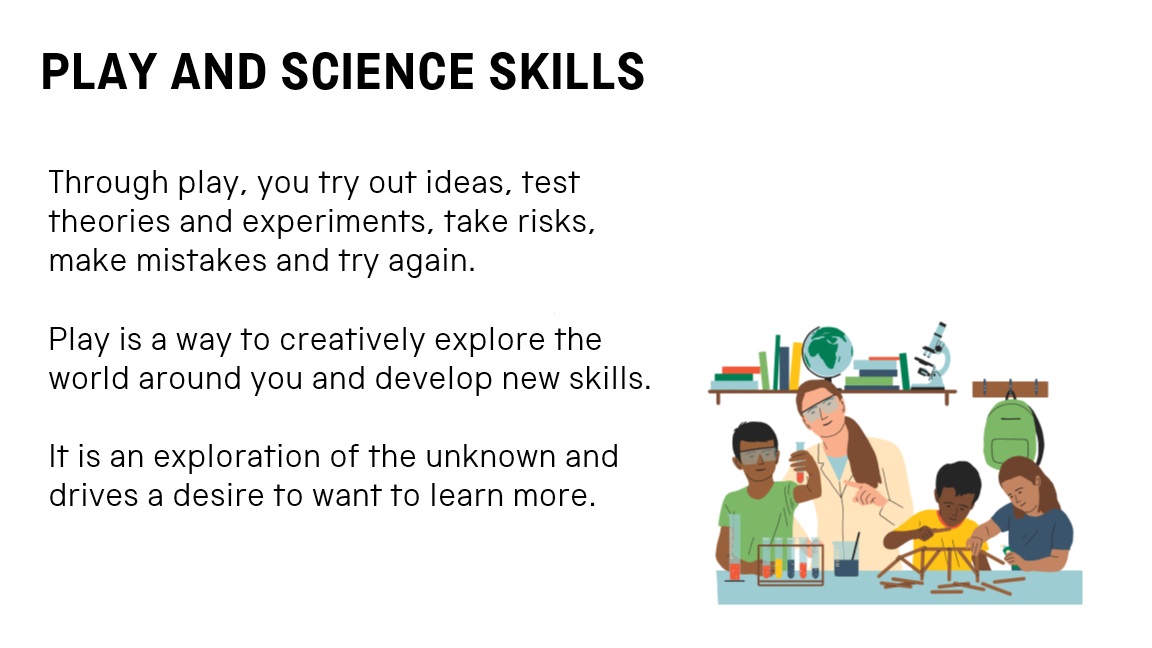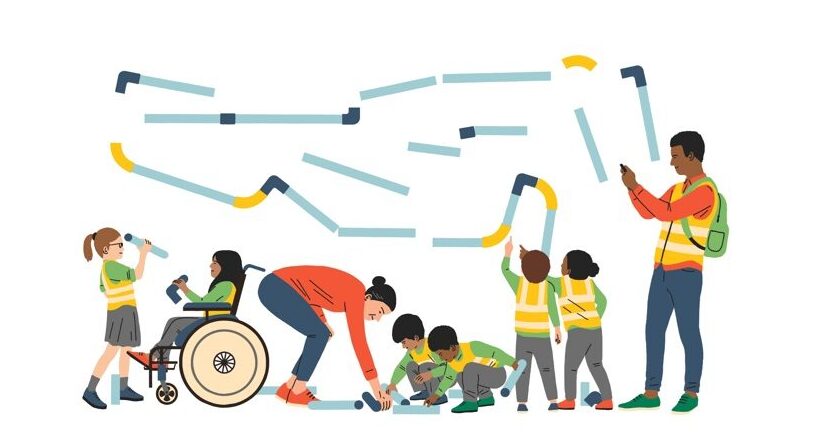The Science Museum Group Academy have been developing (and now delivering) a new course aimed at early years practitioners, called ‘Exploring Science Through Play’.
Alice White, Academy and Resources Developer, interviewed Madeline Stanley, Academy Programme Leader, and Beth Hawkins, Science Museum Group Academy and Projects Manager, who have created the course.
Can you describe what the Exploring Science Through Play Course is about?
Beth… It’s a really lovely course aimed at Key Stage 1 (5-7 year old) practitioners. It’s founded on the research we have done across our Science Museum Group museums with early years audiences, along with wider work around the importance of playful discovery learning – and how that approach can be applied in the classroom and beyond.
The course explores the value of playful science learning experiences and is full of loads of playful science activities. The course also includes a ‘museum adventure’, which is an opportunity to show how museums, and other informal learning settings that are full of objects and perhaps are not specifically designed for younger children, are fantastic places for exploration and discovery and support enquiry based learning.
Why develop a course for Early Years practitioners?
Mady… Firstly, early years (which includes children – and their families and those that work with them) are an important audience for the Science Museum Group (SMG). We want to inspire and engage children as young as possible to help them to grow up feeling that STEM (science, technology, engineering and maths) is something that can be part of.
We wanted to develop a course that would support teachers and other early years practitioners to feel confident with inspiring and engaging younger children with STEM subjects.
What are the key messages you want the course participants to take away with them?
Mady… One of the key messages we hope people take away from the course is how playful science learning is an inclusive way to support meaningful science engagement, both in the classroom and beyond.
We also want to highlight that ‘doing science’ is more than just learning about facts and figures- it is all about exploration and discovery, using and developing skills such as testing, problem solving and imaginative thinking. We hope that teachers will leave feeling more confident in what they already do in the classroom and have a renewed sense of enthusiasm for science and maths engagement with their classes.
Why are playful learning experiences important?
Mady… Play is the fundamental way that children learn about themselves and the world around them in a meaningful way. In fact play is so important it is considered a human right by the United Nations Convention of the Rights of the Child (UNCRC). Play is a powerful learning tool which, if used in the classroom, can enhance, deepen and enrich learning experiences.
When a child is learning through play they will be in a headspace where they are very actively engaged. They are more focused and curious, more willing to make mistakes and learn from them, and they are more able to be imaginative and problem solve. Play and playfulness creates an environment where children can learn in a meaningful way.

Can you talk us through the process you went through when developing the course?
Beth… The process of developing this course started about 10 months before the first course was delivered.
All of our Academy courses take a long time to develop because we want to ensure that what we deliver will be useful and relevant for our audiences. We have been delivering courses for teachers and others involved in STEM engagement for over 20 years which has given us lots of experience of developing and delivering courses.
Our starting point was reflecting on what we’ve learnt from our research from the first phase of the Early Years and Learning project and reflecting on the experiences that would be useful to share with other early years practitioners. We also drew from research from many other early years programmes and projects. This included the Move2Learn project which explored how young children express, communicate, and develop their scientific thinking. Another really interesting study that helped us to frame our thinking was the Harvard Project Zero and the pedagogy of play
We drew inspiration from the types of activities and experiences that we currently run for early years audiences across our SMG museums. We then started to think about what other activities we could develop that would bring the key messages of the course alive.
When we create any course, we always consult with, and involve, as many different people as possible to help us to shape the training. Once we had a rough outline for the course we started to pilot the courses. The pilot courses for this course were run with groups of ‘critical friends’- who included early years teachers and practitioners and researchers working on early years engagement. These pilot courses provided us with really useful feedback, which directly helped us to shape the final version of the course.
Did you encounter any challenges when developing the course?
Mady… One of the main challenges we faced was ensuring that the content of the course aligned with what teachers are teaching their students in the classroom.
One of the great things about the KS1 curriculum is that the working scientifically section is focused more on skills than specific science content – which is what playful learning is all about. We also found that most of the KS1 curriculum topics have a greater focus on plants, animals and living things – and our museums are more physics and chemistry focused. But our learning philosophy and approach of ‘igniting curiosity in STEM through active participation and social interaction’ can be applied to any topic – even beyond science and maths.
What has been the highlight of delivering the course?
Beth… A huge highlight for me (and I’m sure for others who have delivered the course) is all the incredibly enthusiastic teachers who have attended the courses. They have all been so willing to get involved and share their own experiences.
Another highlight has been seeing what happens after the course, when teachers feed back to us the things that they have done as a result of attending the course – such as putting our See, Link, Wonder exploration and discovery tool into action. When we hear about teachers putting the ideas from the course into practice, it makes us feel that it has had some impact and value beyond that one day’s course.
Mady… On the courses we get people who come with vastly different levels of confidence when it comes to science. Although some teacher are science leads in their school, we have found that many of the teachers are really not confident with science at all. To see those with less confidence with science leaving the course feeling really inspired and enthused and that they have the ability to create meaningful, playful science experiences is really lovely.
It is also nice to see teachers share their skills and their experiences with each other on the course, because they come from different specialisms (for example, some people might work more with SEND children). We’ve learnt a lot from what the teachers share and as we say in the course, they are the experts in all that they do!

Was there anything that surprised you with delivery of the course?
Beth… One of the things we hadn’t fully considered when we were developing the course is that the pedagogy of play isn’t unique to early years audiences. It’s something that is applicable for teaching across all ages.
We’ve had a lot of teachers who work with SEND students attending the courses and they seem to have gained a lot from it. They’re sharing the ideas that they use in their classroom and how the pedagogy of play is important in engaging their older students.
Are there any plans for future courses?
Beth… We are still enjoying rolling this course out, but we would like to develop a course for our staff and other museum practitioners who create and deliver activities and programmes for early years audiences.
We also have an ambition to create a new online training video as part of our ‘Making the most of your museum visit’ series. This would share ways to engage early years groups on a visit to any of our SMG museums – or any museum for that matter. Watch this space…
And to round up, can you describe the experience of creating this course in one word?
Mady… Rewarding
Beth… Fun, it really has been great fun!
If you are interested in finding out more about Exploring Science Through Play course you can find out more on the Academy course page.
Our Early Years blog series shares insights from the research, development, and delivery of our work across the Science Museum Group with early years audiences.
What to read next
If you’ve enjoyed this blog, here are some related blogs we recommend…